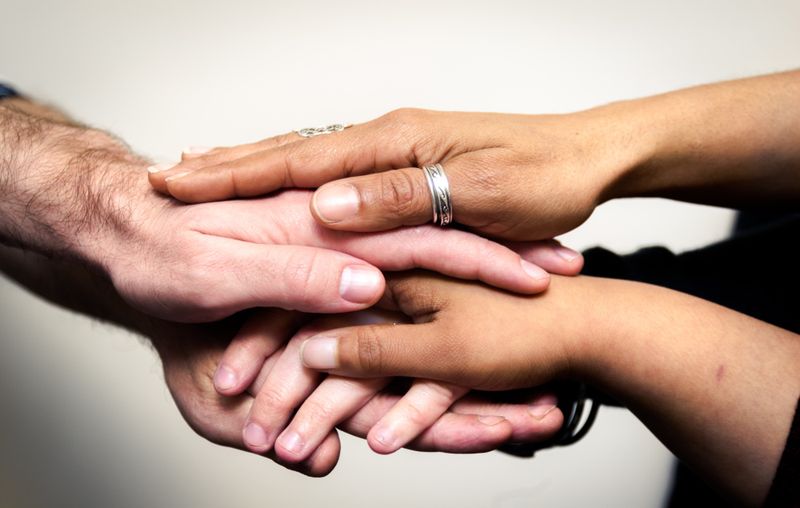Building patience in relationships is crucial for fostering understanding, empathy, and emotional stability. By implementing therapist-recommended techniques, such as active listening, emotional regulation, and effective communication, individuals can nurture healthier interactions in both romantic and family settings.
1. Breathe Before You Speak
In moments of tension, taking a deep breath can act as a reset button for your emotions. It’s an opportunity to gather your thoughts and approach the situation with a clearer, more composed mindset. Breathing deeply helps decrease the intensity of immediate emotional reactions, allowing for a more thoughtful response.
Consider this: a single deep breath can change the course of a heated conversation. It not only provides you with an additional second to think but also sends a calming signal to your brain. This practice encourages mindfulness and restraint in communication.
By mastering the art of breathing before you speak, you transform potentially negative interactions into constructive dialogue. It’s a simple yet powerful tool in maintaining patience.
2. Recognize Your Emotional Triggers
Understanding what specifically triggers your emotions is like having a personalized roadmap to patience. When you identify these triggers, you can prepare strategies to manage your reactions. This awareness helps in curbing the urge to react impulsively.
Imagine knowing exactly what pushes your buttons and having a plan ready to manage it. Recognizing these triggers involves introspection and honesty with oneself, which can be challenging but rewarding.
With this knowledge, you’re better equipped to handle situations that might have previously caused friction. It empowers you to maintain control over your emotions and react with patience and understanding.
3. Shift From Reacting to Responding
The distinction between reacting and responding can change relationship dynamics significantly. Reacting is immediate and often driven by emotion, whereas responding involves a conscious choice. This shift requires patience and practice to implement effectively.
Consider a scenario where a heated exchange is imminent. Choosing to respond thoughtfully rather than react impulsively can diffuse tension and promote understanding. It’s about taking the time to listen, think, and then articulate your response clearly.
This approach fosters a supportive environment where both parties feel heard and respected. Making this shift is a step towards cultivating deeper patience and empathy in relationships.
4. Learn to Pause During Disagreements
In the heat of a disagreement, pausing can be a transformative technique. This intentional break allows emotions to settle and thoughts to organize before continuing the conversation. The pause is not about avoidance but about creating space for clearer communication.
Sometimes, stepping back for a moment can prevent regretful words from being spoken. Pausing shows maturity and a willingness to handle disagreements constructively.
It’s a powerful tool in preserving the respect and love in a relationship, even when opinions collide. Embracing the pause can enhance patience and lead to more meaningful resolutions.
5. Set Realistic Expectations for Growth
Expectations can be the silent obstacles in the path of patience. Setting realistic expectations for yourself and your partner is crucial for nurturing patience. Overly high expectations can lead to disappointment and frustration, eroding patience.
By understanding that growth and change take time, you allow room for mistakes and learning. This mindset fosters a more forgiving and patient approach in relationships.
Being aware of this helps maintain a balanced perspective, encouraging growth without unnecessary pressure. It’s about celebrating small victories and understanding that patience is a journey, not a destination.
6. Accept That Everyone Has a Bad Day
Patience often means understanding that no one is perfect, and bad days happen to everyone. Embracing this reality helps in offering support and empathy when your partner faces a challenging day. This acceptance is crucial for building a compassionate and patient relationship.
Imagine the relief of knowing your partner understands when you’re not at your best. Offering a listening ear or a comforting presence can make a significant difference.
This practice not only strengthens the bond but also sets a foundation for mutual respect and patience. It’s a gentle reminder that love is about accepting imperfections.
7. Listen Fully Without Planning Your Comeback
Active listening is a cornerstone of patience in relationships. It involves focusing entirely on the speaker rather than preparing your response. This practice fosters understanding and demonstrates respect.
When you listen without planning a comeback, you open the door to genuine communication. It’s about giving your full attention and valuing what the other person is expressing.
This level of listening can transform conversations, making them more meaningful and less confrontational. It encourages patience by allowing the natural flow of dialogue without interruption.
8. Practice Compassion Over Control
In relationships, the desire to control outcomes or reactions can be a barrier to patience. Practicing compassion involves letting go of this need for control and embracing understanding instead. It’s about seeing things from the other person’s perspective.
Compassion allows for a more patient approach to conflict and misunderstandings. It’s about prioritizing the well-being of the relationship over being right.
This mindset shift can lead to a deeper connection and a more harmonious relationship, where patience becomes a natural outcome of mutual respect and empathy.
9. Let Silence Do the Talking Sometimes
Silence can be a powerful tool in communication. It provides space for reflection and can convey understanding without words. Allowing silence to be part of conversations encourages patience and can enhance the quality of interactions.
Sometimes, words aren’t necessary to show support or understanding. A shared moment of silence can strengthen the bond between partners, allowing emotions to settle naturally.
Embracing silence as part of communication can lead to a more patient and mindful relationship, where each person feels respected and valued.
10. Journal Before You Vent
Journaling can be an effective way to process emotions before expressing them to others. It allows for self-reflection and clarity, reducing the likelihood of impulsive reactions. This practice is a patience builder, providing a safe space to explore feelings.
By writing down thoughts and emotions, you gain insight into your own mindset and uncover underlying issues. This process helps in communicating more effectively, promoting understanding and patience in relationships.
Journaling before venting ensures that conversations are constructive and not driven by unchecked emotions.
11. Focus on What You Can Control
In relationships, patience is often tested by trying circumstances. Focusing on what you can control, rather than external factors, helps in maintaining patience. This involves recognizing your limitations and concentrating on your own actions and responses.
Imagine the freedom of letting go of things beyond your control, and instead, channeling your energy towards positive actions. This approach encourages a patient and grounded mindset.
By focusing inward, you cultivate a space where patience thrives, benefiting not just yourself but the relationship as a whole.
12. Respect Their Timeline—Not Just Yours
Understanding that each person has their own pace in life is essential for nurturing patience. Respecting your partner’s timeline means acknowledging their personal growth and not rushing them to meet your expectations.
This respect for individual timelines fosters a patient atmosphere, where both parties feel valued and understood. It encourages relationships to develop naturally, without undue pressure.
By prioritizing mutual respect over personal timelines, you create a nurturing environment where patience can flourish.
13. Use “I” Statements Over Blame
Communication in relationships thrives on how feelings are expressed. Using “I” statements rather than blaming language promotes patience and understanding. This approach shifts the focus from accusation to personal experience.
For example, saying “I feel hurt when…” rather than “You always make me feel…” encourages a more patient and constructive dialogue. It reduces defensiveness and opens up pathways for resolution.
This technique reinforces patience by promoting empathy and clarity in communication, enhancing the intimacy and understanding between partners.
14. Reconnect With Your Own Needs
Patience in relationships starts with self-awareness. By understanding and reconnecting with your own needs, you build a foundation for patience. This introspection helps in maintaining balance and avoiding unnecessary frustration.
Taking time for yourself allows you to return to your relationship with renewed patience and understanding. It’s a reminder that nurturing yourself is essential for nurturing your relationship.
This practice of self-care enhances emotional regulation, making you more resilient and patient in interactions with your partner.
15. Notice the Pattern Before the Problem
Recognizing patterns in behavior before they become problems is a proactive approach to nurturing patience. By understanding recurring issues, you can address them before they escalate. This foresight allows you to manage emotions and responses effectively.
Imagine noticing a pattern of miscommunication and addressing it before it leads to conflict. This approach cultivates patience by reducing frustration and enhancing understanding.
It’s about being observant and taking action early, promoting a healthier and more patient relationship dynamic.
16. Reframe Annoyance as a Growth Opportunity
Viewing annoyances as opportunities for growth transforms challenges into constructive experiences. This mindset shift is crucial for developing patience in relationships. It involves recognizing the potential for personal and relational development in every annoyance.
Consider an annoying habit as a chance to understand your partner better and to strengthen your bond. This perspective encourages patience by focusing on the positive aspects of challenges.
Reframing annoyance promotes a more harmonious relationship where patience and growth go hand in hand.
17. Celebrate Progress, Not Just Perfection
In relationships, acknowledging small victories can be as important as striving for perfection. Celebrating progress fosters a patient and supportive environment where growth is encouraged. It’s about appreciating efforts and milestones, however small they may seem.
Imagine the joy of recognizing each step forward, rather than focusing solely on the end goal. This practice builds patience by reinforcing positive behavior and maintaining motivation.
Celebrating progress helps in cultivating a nurturing relationship where patience is valued, and growth is a shared journey.


















